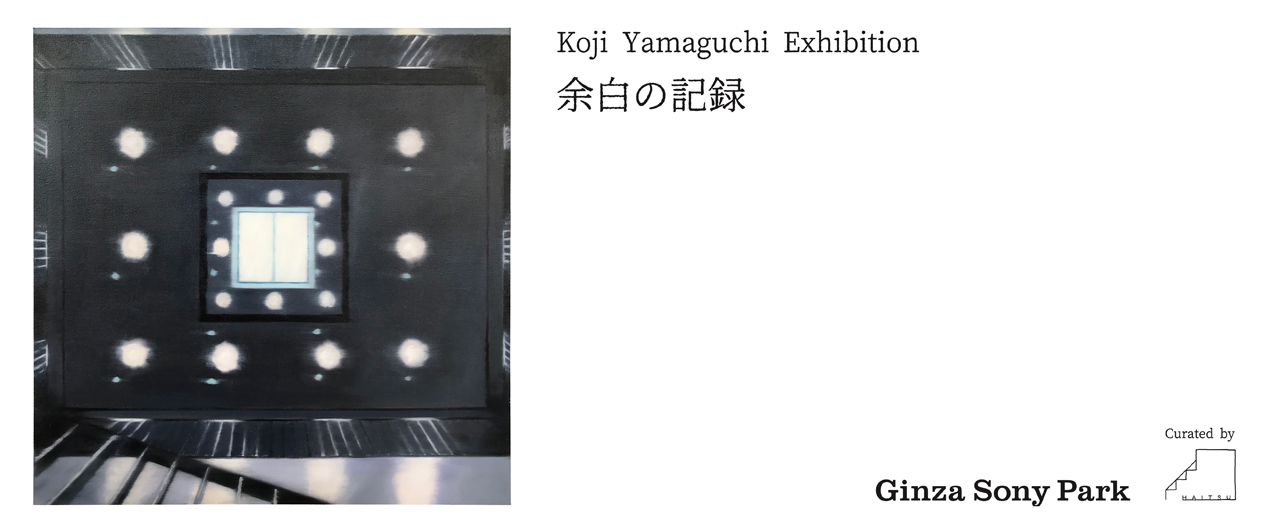ART IN THE PARK by KOJI YAMAGUCHI: Koji Yamaguchi's "YOHAKU NO KIROKU"


Ginza Sony Park will display a permanent exhibition in various places in the Park of new works depicting motifs of the Park and its surroundings by Koji Yamaguchi, an artist who has painted casual, everyday scenes
Ginza Sony Park utilized and expanded the "blank space" of a park until our new beginning instead of merely demolishing the structure of the Sony Building. The framework and tiles of the Sony Building were exposed by the unique construction method of reducing floor space. The actions of people in that space. The definite, quotidian existence of all that has been expressed as "YOHAKU NO KIROKU" through the filter of Mr.Yamaguchi.
Visitors can think on their memories of Ginza Sony Park before it closes temporarily for the new construction project, their recollections of the Sony Building, and the everday blank spaces of each of those while looking for the artworks scattered throughout the park.
Duration: 2021.6.12-9.30
Location: Permanent exhibition in various
locations throughout the Park
*This program has finished.
Comments from Koji Yamaguchi
I heard Sony had created a purposely blank space (Ginza Sony Park) in Ginza's prime location of Sukiyabashi. I thought the sensation of aliveness of people doing things like eating boxed lunches, arranging meetings, and taking naps thanks to that blank space where there seemed to be nothing was wonderful, so I made paintings (where there seemed to be nothing) with purposely blank space.
There are also various textures inside the Park, such as tiles from the past existing alongside the present walls.
Because those textures are placed as patchwork pieces in blank spaces and historic locations in the Park, the artworks are dynamic pieces that I hope will give viewers a conscious sense of space and its vestiges as they look for the works.
Passing through Sony Park a number of times, I heard that all sorts of attractions were opened in the "Garden of Ginza" (Sony Square) created when the Sony Building was first founded, like gerberas in full bloom or installations of fish tanks. This was a place open to the neighborhood and the people since long ago. Connections were born from creating blank space. Sony Park has blank space that cannot be seen by the eye but that is etched in people's memories.

A piece from the limited-time solo exhibition of new works

Artwork from the permanent exhibition
KOJI YAMAGUCHI: Profile
Born in Kanagawa Prefecture in 1982, Koji Yamaguchi was heavily influenced by the flexible viewpoint from his skateboarding, which made the streets his playground. He transitioned to a unique perspective using various techniques such as painting, drawing, and collage, with motifs of everyday scenes and familiar objects. After working in New York from 2015 to 2018, he currently makes Tokyo the base of his activities.

ART IN THE PARK by KOJI YAMAGUCHI: Koji Yamaguchi's "YOHAKU NO KIROKU" (permanent exhibition) Overview
*This program has finished.
| Duration |
2021.6.12 (Sat)-9.30 (Thu) |
|---|---|
| Time |
11:00-19:00 |
| Location |
Various places in Ginza Sony Park |

"YOHAKU NO KIROKU": A Solo Exhibition of New Works by Koji Yamaguchi Overview
*This program has finished.
| Duration |
2021.6.12 (Sat)-6.22 (Tue) |
|---|---|
| Time |
11:00-19:00 |
| Location |
Basement 1/B1 |
Visitors can see several works painted on this occasion in addition to the permanent pieces. The number of people in the venue for the solo exhibition of new works will be restricted so that visitors can feel secure while viewing the art. The pieces will be sold by lottery, so visitors can view them at their leisure during the exhibition period.
How to purchase artworks: See the price list placed in the venue. Scan the QR code next to the details of the work with your smartphone, fill in the necessary information on the entry form, and send. Entrants will be contacted regarding the lottery results, win or lose, by email within one week after the end of the exhibition period. Individuals can submit up to one entry per artwork.

